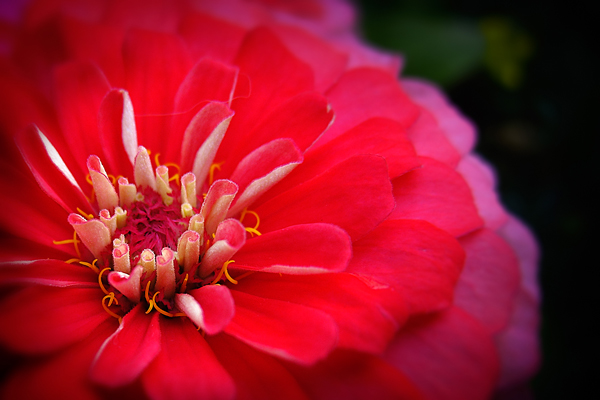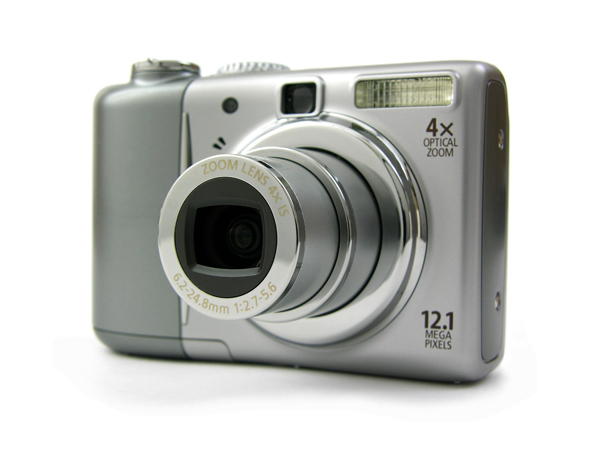Do you want to start taking photography more seriously? Do you want to understand the basic concepts behind your camera’s settings and take photos that you will come to treasure in the years to come? Whether you’ve got a simple point-and-shoot camera or the latest DSLR, How to Take Great Photos With Whatever Camera You Got by Rockable Press will give you all the down-to-earth advice that you will need to take the best photos possible with whatever gear that you have. This book covers several topics including light, composition, exposure and aperture, and will even explain how to shoot photos similar in quality to what you see in magazines or television. Today, we have decided to share the first chapter of this book; It’s Not the Hammer, It’s the Carpenter for you all to enjoy.
Preface
Look at this shot and remember it. I won’t talk about it again until the end of the book. (No, don’t peek.)

Almost everyone these days has a digital camera but what makes one person’s photographs more interesting than the next? In this book we will show you many ingredients that you can add to your photos to make them stand out and make them into photographs rather than snapshots.
We’ll cover the different types of cameras, composition, lighting, the basics of exposure and then move on to finishing and the display of your images in a more professional manner.
Most of the images included in this book have the lens focal length, the ISO, shutter speed and aperture included in the image to try to help show the effect that all these parameters may have on an image. They are not there as a guide on how you should shoot, but to show what effects they may have.

Fig 0-1. image information: 1. focal length, 2. ISO, 3. shutter speed, 4. aperture.
This book is for everyone, whether you are just starting out with your first point-and-shoot or have had a better consumer camera for a while but just can’t get “that” look of photos you see in magazines or online.
As a professional photographer that has taught many photographers both amateur and professional, I know sometimes we get caught up in “tech speak” which becomes meaningless to people just starting out. So in this book, we will explain it in plain English so that everyone is able to understand, learn and get the most out of any camera they may have.
It’s Not the Hammer, It’s the Carpenter
A popular joke among photographers is: “Wow, that’s a great photo, you must have a nice camera.” The funniest part of that is a lot of people believe that it’s true. People look at my camera, a high-end professional model, and say, “That must take great pictures” I always say, no it doesn’t take any pictures at all, I do. And that’s the truth. Cameras are a tool and just like the hammer in the title, without someone knowing how to swing it, it really doesn’t do very much.
The photographer is the biggest difference in how an image looks. More megapixels or better lenses can not compensate for talent. A lesser camera in the hands of someone that has the eye and the vision will far exceed the results of someone with the best and most expensive camera but who can’t understand what makes an image.
But let’s discuss what different types of cameras there are and what makes one a consumer camera and another a professional one. There are some features that in the right hands can make a difference but it’s not what you might think.
Point & Shoot Cameras
The name itself “Point & Shoot” kind of tells the story — just point and shoot the picture without any thought or knowledge, but is that the whole story? Back in the good old days of film (that’s the smelly plastic stuff that came in rolls), consumer cameras were very limited. They had very small negatives and weren’t capable of producing much more than a 4?× 6? print. But the digital point and-shoot cameras of today are much different. It’s hard to find one that doesn’t have at least 10 megapixels, which mean they can easily be made into 12?× 18? wall prints. Some have very good lenses made by such top names in optics like Zeiss and Leica. They have modes besides full auto that allow you to take control. Those different modes and settings can be used to make various artistic decisions that we will learn about later in this book.
They do have some limitations. They have smaller digital sensors than DSLRs (or Digital Single Lens Reflex — a type of camera we’ll learn more about in just a minute) and that can lead to some picture quality differences between say a point-and-shoot and a DSLR of the same megapixel rating. They tend to produce more noise in low light situations also. But one side effect that is actually a good thing is that smaller sensors are actually better at macro photography (close-up life-size images). The lenses on point-and-shoots are not interchangeable so you don’t have all the choices that a DSLR would have but most have a very usable zoom range.

Fig 1-1. a standard pointand- shoot digital camera.
Their flashes are smaller and less powerful, which limits how far from the camera the flash can effectively illuminate a subject. Because of their small size, point-and-shoots often have smaller batteries which means they often can’t operate as long without needing their batteries changed, or if integrated into the unit, recharged.
Now, I’ve told you of their limitations but that does not mean at all that they limit your creativity. That part is still largely up to you. In fact, their small size and compactness makes it easy to carry them around. You will find yourself happy that you had a camera with you when the time and place was just right to get that perfect shot — one you would have missed if all you had was a huge monstrosity of a camera which you decided to leave behind at home or in your car rather than drag it along with you.
Hybrids
The next step up from the pure point-and-shoot cameras are something of a hybrid. They still have the same sensors as a point-and-shoots, but may add interchangeable lenses or accessory lenses that slip over the fixed lens to extend the capabilities of the camera. They may also have a “hotshoe” that allows an external flash unit to be attached, again, to extend its capabilities. People who upgrade to these cameras often want the ease of use of a point-and-shoot with some extended capabilities but are afraid to make the leap up to DSLRs for fear they may be too difficult or complicated to understand (don’t worry, they are not).

Fig 1-2. a hybrid (sometimes called prosumer) camera.
DSLRs
From there we get into consumer DSLRs. A single lens reflex has a series of mirrors and prisms between the viewfinder and lens that allow you to see through the lens as you look into the viewfinder. This allows you to shoot what you see instead of just an approximation.
DSLRs open up a lot of opportunities and options for photographers. In the first place, they have larger sensors, which help capture images that have better clarity and lower noise, and they have better low light capabilities. Then there is the biggest advantage of DSLRs, the ability to change lenses. All the top manufacturers have literally tens to hundreds of different, high quality lenses to choose from: everything from normal lenses, to wide angles, to telephotos. This allows you to have the right lens for any situation.

Fig 1-3. a hotshoe. A hot shoe is a slip-in interface or “shoe” into which you would slide an external flash unit. The “hot” part means that it triggers and sends information to.
DSLRs are larger and able to carry larger batteries, and so can shoot more pictures before needing a charge or change of batteries. They have hot shoes and offer many different choices for auxiliary flash units. There are a multitude of accessories available, everything from remote controls to devices to have a flash off the camera or even to have multiple flashes all fire at once.
One major difference you will find when you move up to a DSLR is the amount of lag time between when you press the button and when the shutter opens. In point-and-shoot cameras there is always a lag which leads to a lot of missed shots. DSLRs, on the other hand, are for all practical purposes instantaneous. If you shoot a lot of sports or action shots a DSLR will make a big difference here.
DSLRs also have the ability to shoot multiple frames per second (FPS), usually between two and five. Again, this is great for shooting action subjects, sports and wildlife, because the camera is able to capture distinct moments of fast-moving scenes — scenes for which we may not be able to press the button at exactly the right time to be able to capture them.
Professional DSLRs
Professional DSLRs may not be everything you think. Yes, they are the best quality, but that may not always translate into superior photographs. In a lot of cases, pro DSLRs share the same sensors and features with some of the higher end consumer DSLRs. Sometimes pro cameras even have fewer features and instead focus on quality of materials and build.

Fig 1-4. DLSRs feature high-quality, interchangeable lenses.
Professional cameras are not only built for the ultimate in image quality but they are also built to withstand the rigors of professional use. The bodies are often magnesium or other high strength, low weight alloys instead of plastic. The bodies and lenses are many times weather sealed for use in all types of conditions. Whereas many consumer shutters are built to hold up for 10,000 clicks in their life, professional shutters are built to last for 100,000 clicks or more before needing replacement.
The lenses that professionals buy are also of a much higher quality and that does lead to improved image quality. But the good news about that is that many of those high end professional lenses will also fit the lower end consumer DSLRs.
In the hands of a knowledgeable professional, these cameras are the ultimate. But if someone doesn’t know an f-stop from a bus stop… these cameras are no better than a point-and-shoot and really make… bad hammers.
Chapter 2: Stop Taking Snapshots, Start Taking Photographs
If you enjoyed Chapter 1, please consider purchasing the rest of this eBook from the Tuts+ Marketplace. Chapter 2: Stop Taking Snapshots, Start Taking Photographs will describe the difference between a snapshot and a photograph and will then discuss the different types of Photography including portrait, landscape, travel, photojournalistic, and still life.